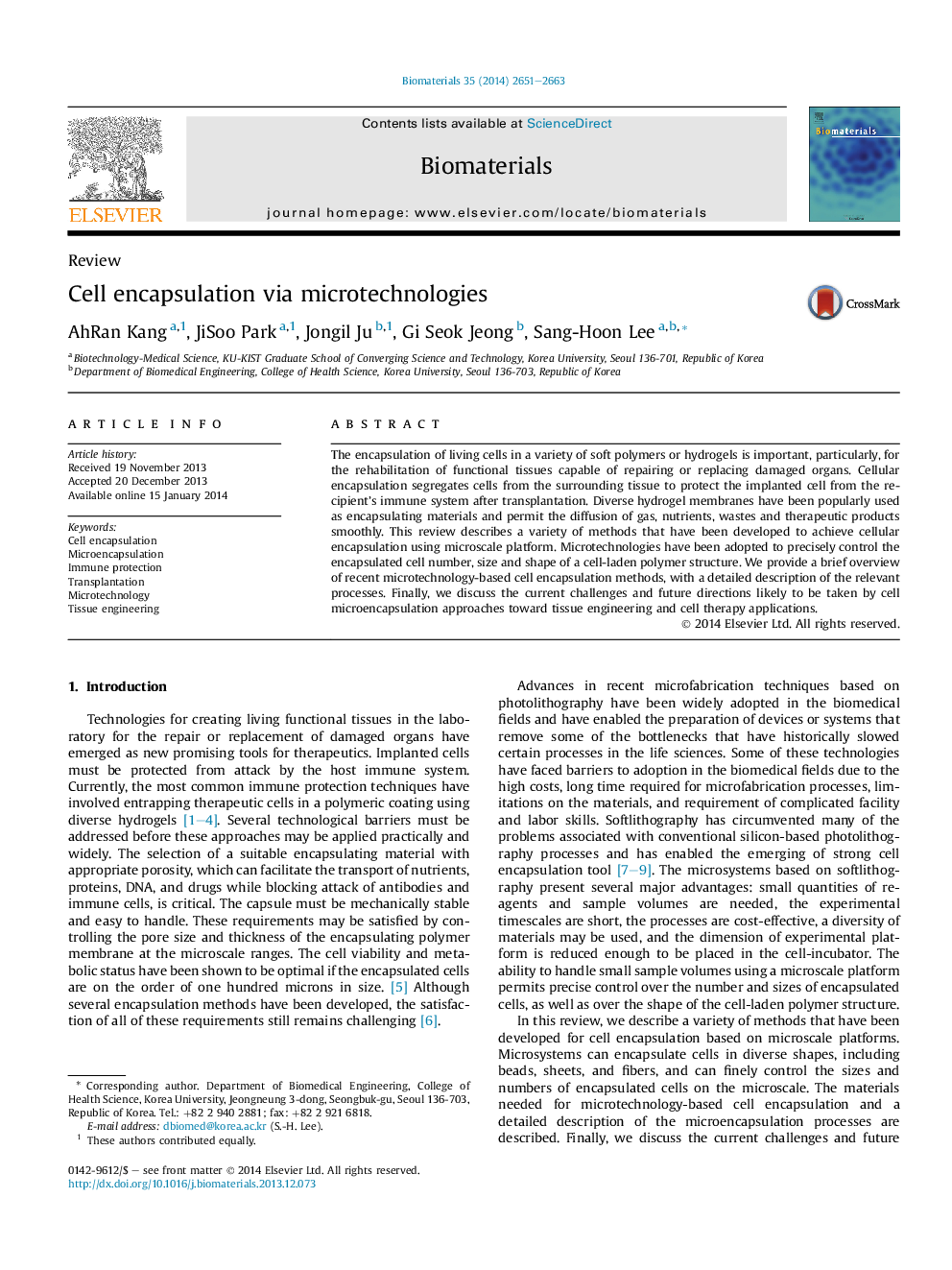| Article ID | Journal | Published Year | Pages | File Type |
|---|---|---|---|---|
| 10227823 | Biomaterials | 2014 | 13 Pages |
Abstract
The encapsulation of living cells in a variety of soft polymers or hydrogels is important, particularly, for the rehabilitation of functional tissues capable of repairing or replacing damaged organs. Cellular encapsulation segregates cells from the surrounding tissue to protect the implanted cell from the recipient's immune system after transplantation. Diverse hydrogel membranes have been popularly used as encapsulating materials and permit the diffusion of gas, nutrients, wastes and therapeutic products smoothly. This review describes a variety of methods that have been developed to achieve cellular encapsulation using microscale platform. Microtechnologies have been adopted to precisely control the encapsulated cell number, size and shape of a cell-laden polymer structure. We provide a brief overview of recent microtechnology-based cell encapsulation methods, with a detailed description of the relevant processes. Finally, we discuss the current challenges and future directions likely to be taken by cell microencapsulation approaches toward tissue engineering and cell therapy applications.
Keywords
Related Topics
Physical Sciences and Engineering
Chemical Engineering
Bioengineering
Authors
AhRan Kang, JiSoo Park, Jongil Ju, Gi Seok Jeong, Sang-Hoon Lee,
